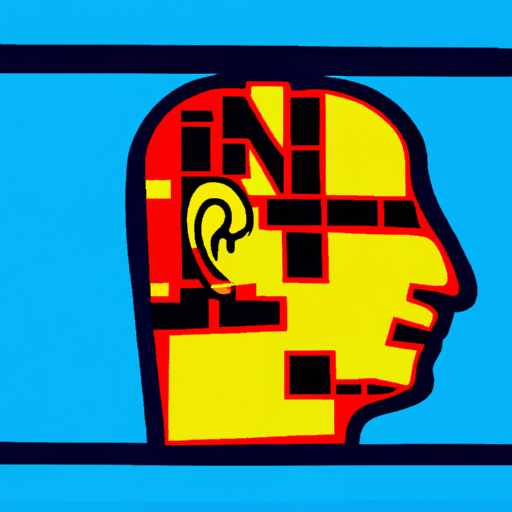-
Table of Contents
AI’s Role in Environmental Graphics and Wayfinding Design
Environmental graphics and wayfinding design play a crucial role in helping people navigate and understand their surroundings. Whether it’s finding your way through a complex building or understanding the layout of a city, effective environmental graphics and wayfinding design can enhance the user experience and improve overall accessibility. With the advancements in artificial intelligence (AI), designers now have powerful tools at their disposal to create more efficient and intuitive wayfinding systems. In this article, we will explore the role of AI in environmental graphics and wayfinding design, and how it is revolutionizing the field.
The Importance of Environmental Graphics and Wayfinding Design
Before delving into the role of AI, it is essential to understand the significance of environmental graphics and wayfinding design. These design elements are not just about aesthetics; they serve a practical purpose in guiding people through physical spaces. Whether it’s a hospital, airport, or shopping mall, effective wayfinding design can reduce stress, improve efficiency, and enhance the overall user experience.
Environmental graphics encompass a wide range of visual elements, including signage, maps, symbols, and typography. These elements are strategically placed to provide information and guide individuals in a particular environment. Wayfinding design, on the other hand, focuses on the overall system of navigation, including the layout, organization, and placement of environmental graphics.
Now, let’s explore how AI is transforming the field of environmental graphics and wayfinding design.
AI-Powered Mapping and Navigation Systems
One of the most significant contributions of AI to environmental graphics and wayfinding design is the development of AI-powered mapping and navigation systems. These systems utilize machine learning algorithms to analyze vast amounts of data and provide real-time navigation guidance.
For example, Google Maps uses AI algorithms to analyze traffic patterns, historical data, and user behavior to provide accurate and efficient navigation. This technology has revolutionized the way people navigate cities and has become an essential tool for both pedestrians and drivers.
Similarly, indoor mapping and navigation systems are becoming increasingly popular in large buildings and complexes. AI algorithms can analyze floor plans, architectural data, and user feedback to create interactive maps and provide step-by-step directions. This technology is particularly useful in complex environments such as hospitals, airports, and shopping malls, where finding the right location can be challenging.
AI-Generated Signage and Symbols
Another area where AI is making a significant impact is in the generation of signage and symbols. Traditionally, designers had to manually create and update signage, which could be time-consuming and prone to errors. With AI, designers can automate the process of generating signage and symbols, saving time and ensuring consistency.
AI algorithms can analyze the layout of a building or environment and generate appropriate signage based on predefined rules and guidelines. For example, an AI system can analyze a hospital floor plan and generate signage for different departments, rooms, and facilities. This automation not only saves time but also reduces the chances of errors and inconsistencies in the signage system.
Moreover, AI can also assist in the creation of symbols that are universally understood. By analyzing a vast database of symbols and their meanings, AI algorithms can generate symbols that are easily recognizable and comprehensible to people from different cultures and backgrounds. This ensures that the wayfinding system is inclusive and accessible to all individuals.
AI-Enhanced User Experience
AI is not only improving the efficiency and accuracy of environmental graphics and wayfinding systems but also enhancing the overall user experience. By analyzing user behavior and preferences, AI algorithms can personalize the wayfinding experience to meet individual needs.
For example, AI-powered wayfinding systems can learn from user feedback and adapt their recommendations accordingly. If a user consistently prefers a particular route or mode of transportation, the system can prioritize those preferences and provide tailored recommendations. This level of personalization not only improves efficiency but also reduces stress and enhances user satisfaction.
Furthermore, AI algorithms can also analyze real-time data, such as weather conditions and traffic congestion, to provide dynamic recommendations. For instance, if there is heavy traffic on a particular route, the system can suggest alternative paths to avoid delays. This real-time adaptability ensures that users have the most up-to-date information and can make informed decisions.
Case Studies and Examples
Several real-world examples demonstrate the impact of AI in environmental graphics and wayfinding design:
- Wayfindr: Wayfindr is an AI-powered system that assists visually impaired individuals in navigating public spaces. By using Bluetooth beacons and smartphone apps, Wayfindr provides audio instructions and directions to help visually impaired individuals navigate complex environments independently.
- Smart Cities: Many cities are leveraging AI to create smart wayfinding systems. For example, Singapore’s Smart Nation initiative uses AI algorithms to analyze real-time data and provide personalized recommendations for transportation routes, parking availability, and public amenities.
- AI-Generated Signage: The University of Tokyo has developed an AI system that generates signage for large-scale events. By analyzing event schedules, floor plans, and user preferences, the system can automatically generate signage that guides attendees to different venues and facilities.
Conclusion
AI is revolutionizing the field of environmental graphics and wayfinding design. From AI-powered mapping and navigation systems to AI-generated signage and symbols, designers now have powerful tools to create more efficient and intuitive wayfinding systems. AI not only improves the accuracy and efficiency of these systems but also enhances the overall user experience by personalizing recommendations and providing real-time adaptability. As AI continues to advance, we can expect even more innovative solutions that will further improve accessibility and navigation in our physical environments.
